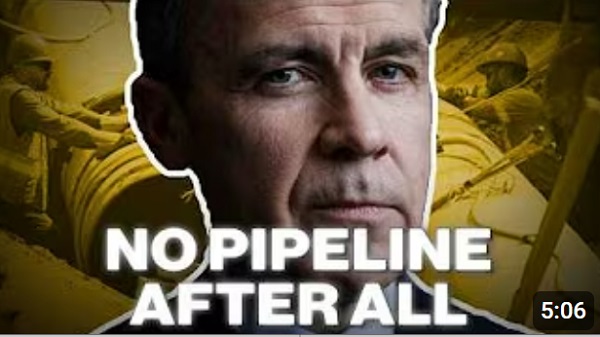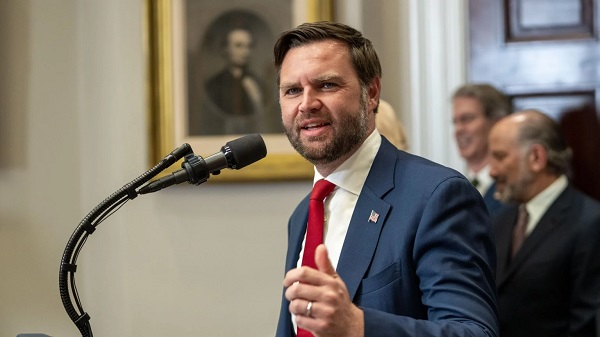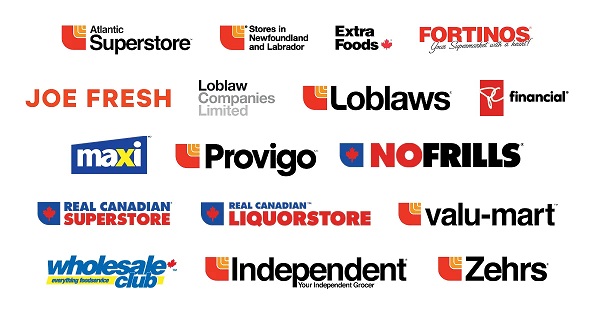Alberta
Alberta Budget 2025: Health and education

Budget 2025 makes another record health care investment of $28 billion for a refocused health care system that ensures every Albertan has access to high-quality, reliable services close to home. The budget supports the government’s plan to provide targeted, specialized care in the four areas of acute care, primary care, mental health care and continuing care.
With the highest-ever operating budget of $9.9 billion for education from kindergarten to Grade 12, Budget 2025 will help hire thousands more teachers and support staff, lower class sizes and provide enhanced educational support to students with complex needs.
The budget invests $2.6 billion in capital dollars over three years, an increase of 23.9 per cent from the last budget. This includes $225 million to advance the planning and design of 30 new schools, five replacement schools, three modernization school projects, three public charter school projects and modular classrooms. These schools are in addition to the 22 that have been advanced to the next construction phase under the School Construction Accelerator Program, launched in fall 2024. Another 28 projects are in other stages of construction. Alberta’s government is committed to building much needed schools across the province and aims to deliver more than 100 new and updated schools – or about 200,000 student spaces – over the next seven years.
“All Albertans deserve access to the best our health care and education systems have to offer. Alberta is growing as many families choose us as home. Budget 2025 will help meet the growing demands of the province while continuing to provide the services Albertans have come to trust and rely on.”
Budget 2025: Strengthening health care
Budget 2025 supports the government’s plan to build a refocused health care system that will provide Albertans with the necessary care when and where they need it.
Health investments across the refocused health care system in Budget 2025 include:
- $644 million for primary care to attach every Albertan with a primary care team and improve access to family doctors and frontline health-care professionals. This includes $20 million to support the work of nurse practitioners.
- $4.6 billion for acute care, to support increases to services to meet volume and costs, and to improve the acute care system in hospitals, urgent care centres, chartered surgical and other health facilities.
- $45 million for Indigenous health initiatives over three years, to help address health inequities and promote health, wellness and increased choice.
- $7 billion for physician compensation and development, including $15 million for recruitment and retention.
- $1.9 million for drugs and supplemental health benefits including the seniors drug program, which is the largest component that supports more than 700,000 seniors.
- $1.7 billion to support addiction and mental health services to increase access to the supports Albertans require to pursue recovery and personal wellness. This includes implementation of the compassionate intervention framework, support for Recovery Alberta services, new recovery communities, and to expand mental health classrooms for clinical support to students with complex mental health needs.
- $3.8 billion for Assisted Living Alberta, the new provincial continuing care health agency, which will provide wraparound medical and non-medical supports, home care, community care and social services.
A total of $3.6 billion in capital dollars over three years will support new urgent care and primary care centres, build capacity at existing hospitals, expand surgical capacity, enhance rural hospitals and health facilities, and replace aging equipment to support improved health outcomes. This includes:
- $769 million to support transformational changes in continuing care, increase the number of assisted living spaces and modernize existing assisted living homes in Alberta.
- $265 million for the Alberta Surgical Initiative capital program to expand, renovate and build more operating rooms to boost surgical capacity.
- $207 million for the development of specialized compassionate intervention facilities to provide care for patients.
- $168 million in new funding to enhance diagnostic capabilities across the province.
- $148 million to continue building Recovery Communities. A total of 11 recovery communities, including five in Indigenous communities, have been approved, with the Calgary Recovery Community scheduled to open in 2025. So far, 200 new addiction treatment beds are operational in Red Deer, Lethbridge and Gunn.
- $60 million over three years to purchase new EMS vehicles and ambulances, upgrade the existing fleet and buy more equipment.
“Budget 2025 builds on our commitment to refocusing Alberta’s health care system, improving access for Albertans, and supporting frontline workers. With significant investments in primary care, capital projects, Indigenous health, and acute services, we are ensuring Albertans receive the care they need, when and where they need it.”
“Alberta is an international leader in addiction treatment and recovery, driven by the Alberta Recovery Model. We remain committed to investing in the wellness of Albertans and providing those struggling with mental illness or addiction with the services they need to rebuild their lives. We are also committed to expanding access to treatment services by building new facilities across the province.”
Budget 2025: Investing in kindergarten through Grade 12 (K-12) education
Albertans deserve world-class education for their families now and in the future. Budget 2025 provides an operating expense budget of $9.9 billion in 2025-26, a 4.5 per cent increase from the 2024-25 third-quarter forecast.
- $54 million in 2025-26, along with $348 million more over the following two years will support additional enrolment growth.
- an increase of $55 million in 2025-26, and another $94 million in each of the following two years, to adjust the funding formula for school authorities to provide increased sustainable funding for growth within the funding model.
- In total, almost $1.1 billion will be provided over the next three years to address growth and hire more than 4,000 new teachers and classroom support staff.
- More than $1.6 billion in 2025-26 will support students with specialized learning needs or groups of students who need additional help.
- An investment of $55 million in 2025-26, a 20 per cent increase from last year, will allow school authorities to add staff and supports to complex classrooms so students receive the focus and attention they need.
- $389 million over three years will provide increases to funding rates to cover the rising costs of maintaining educational facilities, unavoidable expenses like insurance and utilities, and providing programs and services to students.
“Budget 2025 offers solutions to many of the challenges our education system is experiencing. We’re making new investments to hire more teachers, build more schools and give our youngest learners the strongest possible start. I’m excited to present this strong education budget to Albertans and am confident it will help keep our education system world-class.”
As Alberta continues to attract families, workers, and businesses, strategic investments in health care and education will address current demands and lay the groundwork for long-term prosperity.
Budget 2025 is meeting the challenge faced by Alberta with continued investments in education and health, lower taxes for families and a focus on the economy.
Related information
Alberta
They never wanted a pipeline! – Deputy Conservative Leader Melissa Lantsman

From Melissa Lantsman
Turns out the anti-development wing of the Liberal Party never stopped running the show.
Today, we’ll see if the Liberals vote for the pipeline they just finished bragging about.
Spoiler: they won’t. Because with the Liberals, the announcements are real, but the results never are.
Alberta
Premier Smith: Canadians support agreement between Alberta and Ottawa and the major economic opportunities it could unlock for the benefit of all

From Energy Now
By Premier Danielle Smith
Get the Latest Canadian Focused Energy News Delivered to You! It’s FREE: Quick Sign-Up Here
If Canada wants to lead global energy security efforts, build out sovereign AI infrastructure, increase funding to social programs and national defence and expand trade to new markets, we must unleash the full potential of our vast natural resources and embrace our role as a global energy superpower.
The Alberta-Ottawa Energy agreement is the first step in accomplishing all of these critical objectives.
Recent polling shows that a majority of Canadians are supportive of this agreement and the major economic opportunities it could unlock for the benefit of all Canadians.
As a nation we must embrace two important realities: First, global demand for oil is increasing and second, Canada needs to generate more revenue to address its fiscal challenges.
Nations around the world — including Korea, Japan, India, Taiwan and China in Asia as well as various European nations — continue to ask for Canadian energy. We are perfectly positioned to meet those needs and lead global energy security efforts.
Our heavy oil is not only abundant, it’s responsibly developed, geopolitically stable and backed by decades of proven supply.
If we want to pay down our debt, increase funding to social programs and meet our NATO defence spending commitments, then we need to generate more revenue. And the best way to do so is to leverage our vast natural resources.
At today’s prices, Alberta’s proven oil and gas reserves represent trillions in value.
It’s not just a number; it’s a generational opportunity for Alberta and Canada to secure prosperity and invest in the future of our communities. But to unlock the full potential of this resource, we need the infrastructure to match our ambition.
There is one nation-building project that stands above all others in its ability to deliver economic benefits to Canada — a new bitumen pipeline to Asian markets.
The energy agreement signed on Nov. 27 includes a clear path to the construction of a one-million-plus barrel-per-day bitumen pipeline, with Indigenous co-ownership, that can ensure our province and country are no longer dependent on just one customer to buy our most valuable resource.
Indigenous co-ownership also provide millions in revenue to communities along the route of the project to the northwest coast, contributing toward long-lasting prosperity for their people.
The agreement also recognizes that we can increase oil and gas production while reducing our emissions.
The removal of the oil and gas emissions cap will allow our energy producers to grow and thrive again and the suspension of the federal net-zero power regulations in Alberta will open to doors to major AI data-centre investment.
It also means that Alberta will be a world leader in the development and implementation of emissions-reduction infrastructure — particularly in carbon capture utilization and storage.
The agreement will see Alberta work together with our federal partners and the Pathways companies to commence and complete the world’s largest carbon capture, utilization and storage infrastructure project.
This would make Alberta heavy oil the lowest intensity barrel on the market and displace millions of barrels of heavier-emitting fuels around the globe.
We’re sending a clear message to investors across the world: Alberta and Canada are leaders, not just in oil and gas, but in the innovation and technologies that are cutting per barrel emissions even as we ramp up production.
Where we are going — and where we intend to go with more frequency — is east, west, north and south, across oceans and around the globe. We have the energy other countries need, and will continue to need, for decades to come.
However, this agreement is just the first step in this journey. There is much hard work ahead of us. Trust must be built and earned in this partnership as we move through the next steps of this process.
But it’s very encouraging that Prime Minister Mark Carney has made it clear he is willing to work with Alberta’s government to accomplish our shared goal of making Canada an energy superpower.
That is something we have not seen from a Canadian prime minister in more than a decade.
Together, in good faith, Alberta and Ottawa have taken the first step towards making Canada a global energy superpower for benefit of all Canadians.
Danielle Smith is the Premier of Alberta
-

 Censorship Industrial Complex2 days ago
Censorship Industrial Complex2 days agoUS Condemns EU Censorship Pressure, Defends X
-

 Dan McTeague2 days ago
Dan McTeague2 days agoWill this deal actually build a pipeline in Canada?
-

 Banks2 days ago
Banks2 days agoTo increase competition in Canadian banking, mandate and mindset of bank regulators must change
-

 Business2 days ago
Business2 days agoLoblaws Owes Canadians Up to $500 Million in “Secret” Bread Cash
-

 Business21 hours ago
Business21 hours agoCanada invests $34 million in Chinese drones now considered to be ‘high security risks’
-

 Opinion2 days ago
Opinion2 days agoThe day the ‘King of rock ‘n’ roll saved the Arizona memorial
-

 Focal Points2 days ago
Focal Points2 days agoCommon Vaccines Linked to 38-50% Increased Risk of Dementia and Alzheimer’s
-

 espionage1 day ago
espionage1 day agoWestern Campuses Help Build China’s Digital Dragnet With U.S. Tax Funds, Study Warns








